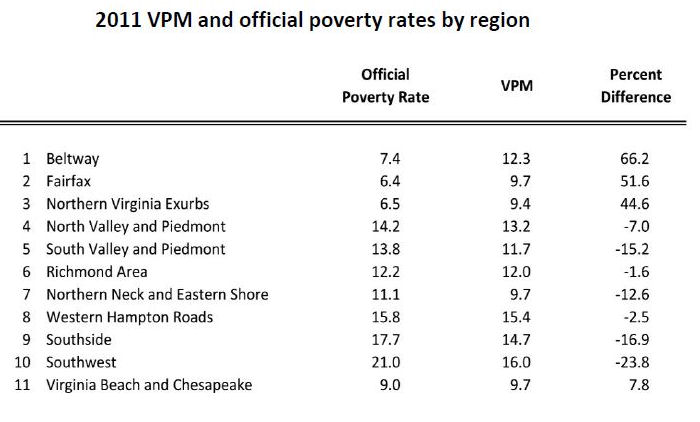
Source: Weldon Cooper Center. Updated poverty measures suggest that regional disparities in poverty aren’t as wide as commonly thought.
Motivated by the many drawbacks of the official U.S. measure of poverty, the Weldon Cooper Center for Public Service has introduced a “Virginia Poverty Measure” (VPM) to account for regional differences in the cost of living, the impact of government assistance and other factors.
The more nuanced statistical analysis does not alter the overall poverty measure very much. In contrast to the official measure of 11.6% of Virginians living in poverty in 2011, the VPM finds that 11.9% do. But digging deeper into the data, author Dustin Cable draws some interesting conclusions:
-
Although Northern Virginia counties and cities enjoy some of the highest median incomes in the nation, the VPM shows that the extent of economic deprivation in the region is significantly greater than what official poverty statistics suggest. For example, by capturing the impact of the region’s high cost of housing, the VPM finds many more Northern Virginia residents in or near poverty, particularly those living inside the Beltway.
-
The VPM poverty rate for children is dramatically lower than the official rate. Official statistics do not account for the impact of many government programs targeted favorably towards families with young children. By including these tax code provisions and in-kind benefit, the VPM recognizes the full range of resources available for families with young children.
-
By including calculations for taxes and adjustments for cost of living, the VPM classifies a greater number of people as “near poor.” However, by including more government programs and subsidies for the poor, the VPM finds fewer Virginians in “deep poverty.”
— JAB


